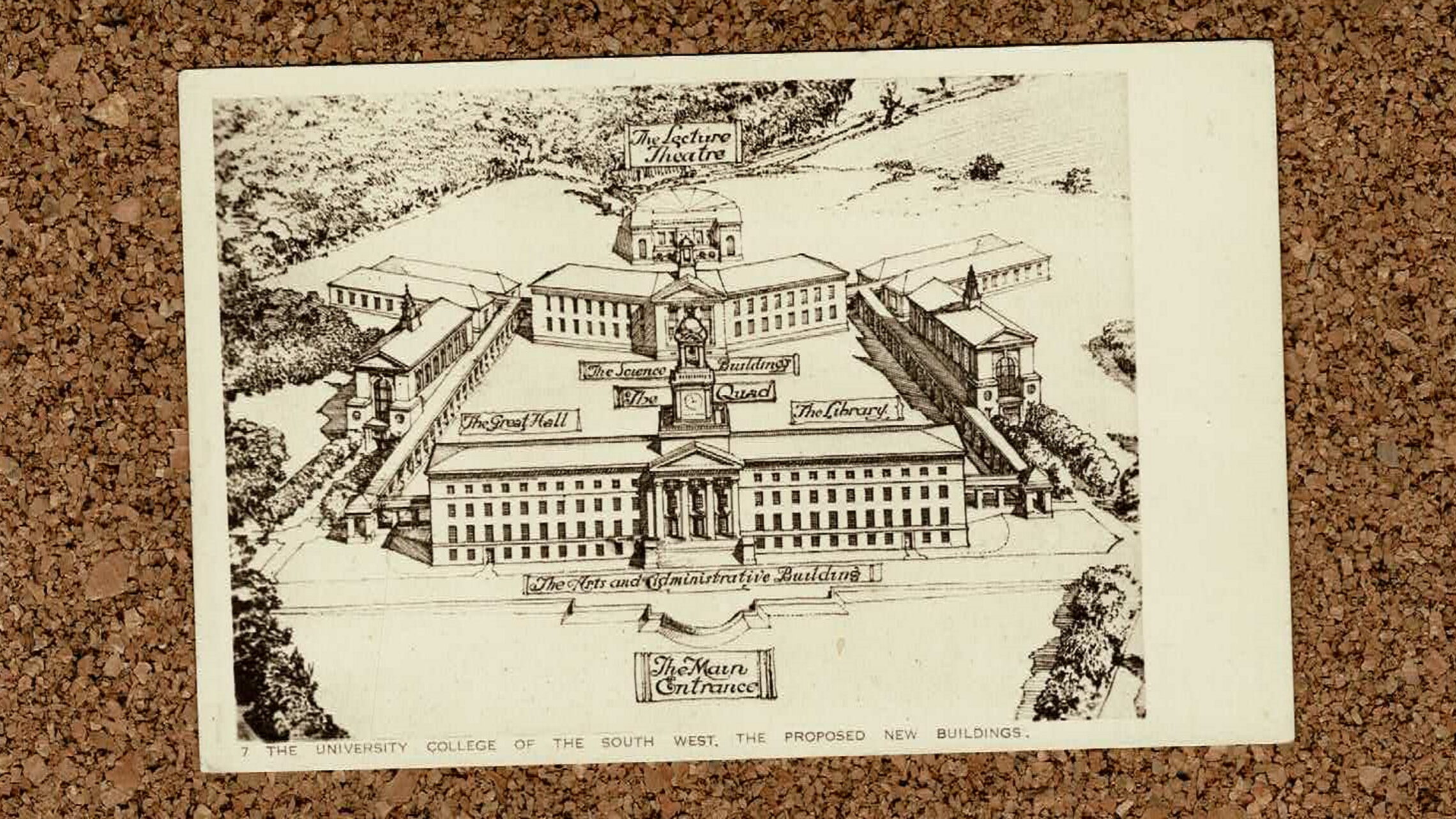Greetings from Devon! This week’s card shows a view which you won’t find if you visit Exeter. It’s a sketch of the proposed new buildings on the Streatham campus, when the University College of the South West was in its infancy.
Like many UK universities, the Exeter University we know today grew from other institutions. Let’s take them chronologically.
Firstly, Exeter Diocesan Training College opened its doors in 1840, providing training for teachers. Like many such colleges, its foundation was an initiative of the church. In 1854 it moved to new premises on Heavitree Road. Its official opening was on 18 October – the feast of St Luke’s – and the College was known as St Luke’s thereafter.
From 1912 St Luke’s became a constituent member of the Institute of Education of the Royal Albert Memorial College (of which more later). The St Luke’s moniker was formally adopted in 1930, and the college was incorporated into the University of Exeter in 1978, forming – with the existing Institute of Education – a School of Education.
Now for the second branch of the family tree. Following the Great Exhibition of 1851 (I’ve written about similar developments in relation to the City and Guilds Institute) two institutions were founded in Exeter: the Exeter School of Art in 1855 and the Exeter School of Science in 1863. In 1868 these both relocated to the newly-established Royal Albert Museum and in 1893 became Exeter Technical and University Extension College. In 1900 it again changed its name – to the Royal Albert Memorial College – and moved into its own premises.
In 1922 the College gained new and more official stature. It was renamed the University College of the South West of England and became eligible for funds from the University Grants Committee. Its students read for degrees of the University of London.
This is the body which became the University of Exeter in 1955. Before then, however, it also moved to the Streatham campus, having been given Streatham Hall by a benefactor (it was renamed Reed Hall in his honour) and having bought a large part of the Streatham estate.
And now for branch the third. The Camborne School of Mines was founded in 1888, growing out of a number of educational, welfare and research initiatives for miners and mining dating back to 1829. Proposals in 1969, that it be merged with the Plymouth Polytechnic, were unsuccessful – however, it was incorporated in 1993 into the University of Exeter. In 2004 it moved to Penrhyn, and now forms part of the activities at the Penrhyn campus of the university.
The card itself dates, I think, from the 1920s. It shows what is likely to be the campus master plan of the University College architect, Vincent Harris. This envisaged four harmonious buildings around a quadrangle, with a separate lecture theatre.
Although some of the campus buildings were designed by Harris (Washington Singer; Mardon Hall, Roborough Library, and the chapel), the quadrangle never was. (Although I think there’s a hint of Washington Singer in the Arts and Administrative Building.)
The card was part of a set of 24 sold to raise funds for the university. Who knows, if more had been sold, maybe the vision would have been a reality?













This may be of interest and the reason why it is called the Streatham Campus https://www.facebook.com/groups/StreathamSociety/permalink/1462856854225299/
A further interesting point is that Floella Benjamin was Chancellor – a long-time Streatham SW London resident